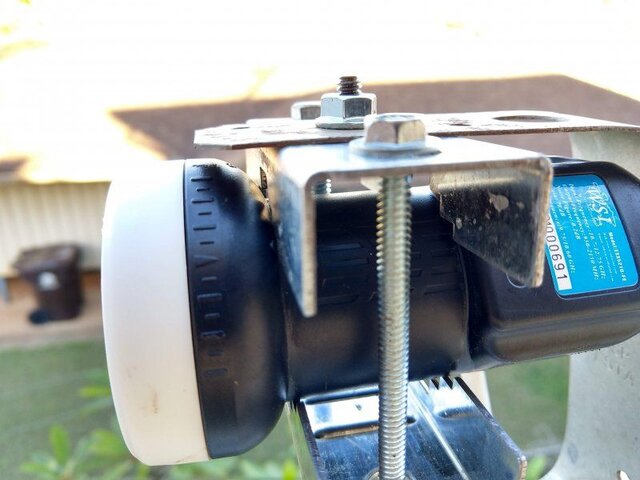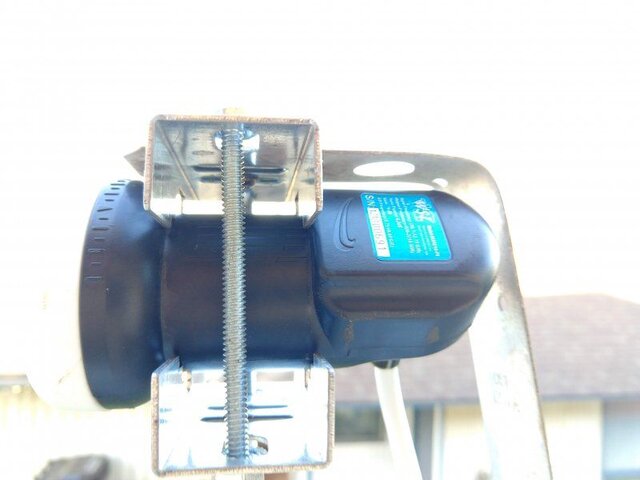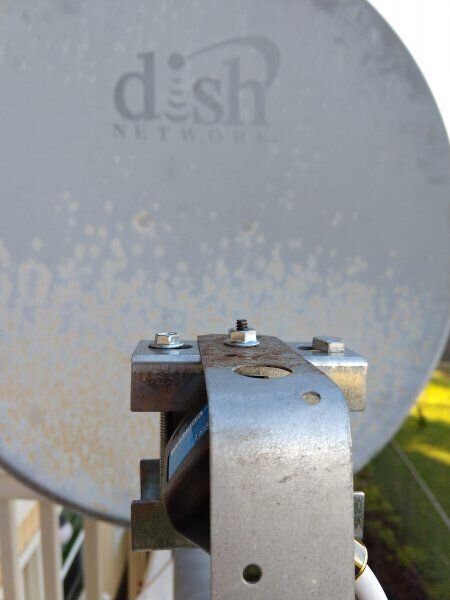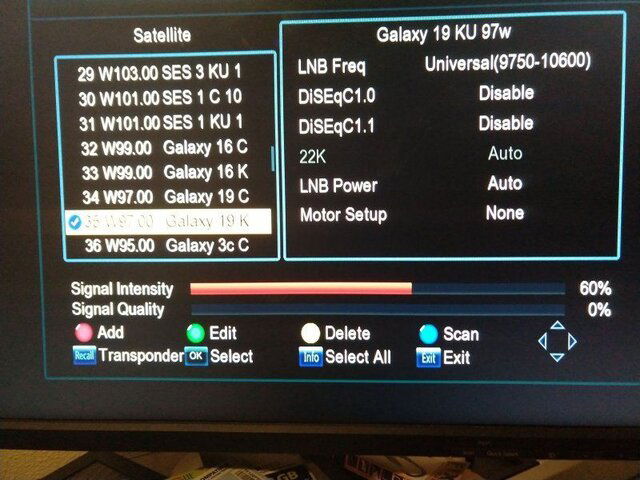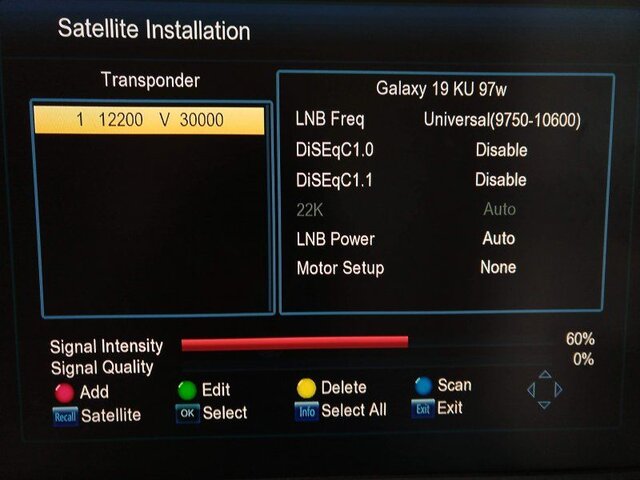I have an old 30" dish from dish network and changed the original dish pro lnbf to a universal ku band one. I'm trying to get galaxy 19 at 97w. I'm not getting any signal at all; "signal quality" stays 0. I carefully aligned the dish. I thoroughly searched this forum and others on setups here in Hawaii without much luck.
Is a 30" offset dish going to work with 97w or 125w?
Is there anybody here with a successful fta installation in Hawaii, with some tips?
What would be a recommended fta receiver and lnb? (currently I have a cheap Chinese fta receiver and a universal LNB or the original dishnetwork LNB)
My goal is to add on some international channels to my ATSC local ones I have already and to fully understand satellite technology.
Thanks in advance.
Is a 30" offset dish going to work with 97w or 125w?
Is there anybody here with a successful fta installation in Hawaii, with some tips?
What would be a recommended fta receiver and lnb? (currently I have a cheap Chinese fta receiver and a universal LNB or the original dishnetwork LNB)
My goal is to add on some international channels to my ATSC local ones I have already and to fully understand satellite technology.
Thanks in advance.


 to SatelliteGuys
to SatelliteGuys 